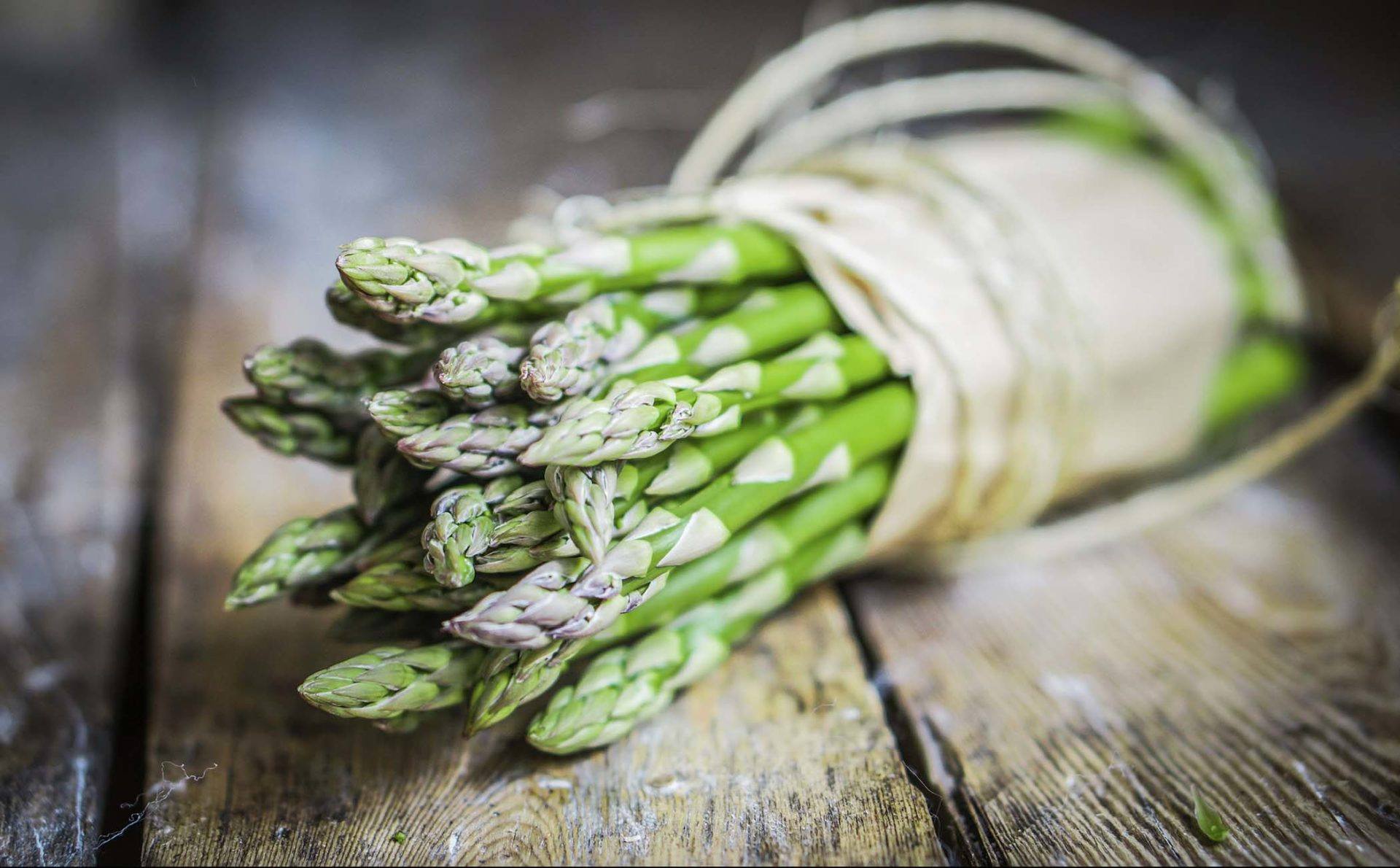Asparagus shines no matter how you prepare it. Grill asparagus on an open flame or smother it in butter and garlic — even a quick steam will result in deliciously tender and slightly crisp stalks. It can be added to salads, quiches, omelets, pasta dishes, and stir-fries, or simply enjoyed on its own as a healthy and flavorful side dish. Don’t miss out on the chance to elevate your meals with this distinctive vegetable.
While most of us are fully aware of how delicious asparagus can be, how many of us know much beyond that? As it turns out, there’s a lot to know. First, it’s not actually a kind of grass. Asparagus are members of the lily family, and it’s the first tender shoots that are harvested and consumed. They can be challenging to cultivate, but once harvested, they come packed with great flavor and a number of notable health benefits.
On the Origins of Asparagus
Our love-affair with asparagus in the West started around 2,000 years ago, in the area along the eastern stretch of the Mediterranean. While it began as a wild plant, it wasn’t long before people began working to cultivate the tasty spears domestically. The ancient Greeks and Romans are known to have considered asparagus a delicacy, enjoying it in season and drying some for later use. The ancient Egyptians were also big asparagus fans. In medieval France, white asparagus (grown without sunlight) became more highly prized than green for its elevated sweetness and delicate flavor. Nowadays, the two biggest asparagus producers are China and Peru, demonstrating a truly international fan base!
There are over 300 species of asparagus in the world (spanning from Siberia to South Africa), but the one most people will recognize are the common garden variety. As noted, the grass-like stems aren’t really grass at all – they’re the first shoots of what will eventually grow to be a large, fernlike bush. Asparagus plants will often take one to two years after being planted to produce shoots, but once they start, they can continue producing for a decade or more! Asparagus will also grow in soil that is too sandy or heavy in clay for other crops, and they thrive in the long winters that can spell disaster for less-rebellious vegetables. In spite of resiliency, the productive season is relatively short – only about 12 weeks total. Our global economy lets us enjoy this seasonal treat year-round, but we still think the best asparagus are the ones grown right at the start of Spring!
The Care and Keeping of Your Asparagus
While most of us will devour our asparagus as soon as we bring it home, there are a few things to keep in mind if you’re not eating it immediately. First, don’t store them for too long: fresh asparagus really only have a shelf-life of three to four days. Keep your asparagus cool and dry. If you must wash it, do it gently and dry to prevent mold. Keep it from going limp by wrapping the base of your asparagus bundle in a moist cloth or paper towel, then place in a plastic bag. Alternatively, place your asparagus in wide-mouthed jar or glass with an inch of clean water – this will help keep your asparagus crisp right until the moment you use it!
Asparagus Enjoyment and Benefits
Asparagus are very, very versatile and can prepared pretty much any way you can imagine as noted above. If you need inspiration, here are delicious recipes for Asparagus with Pecorino and Meyer Lemon Poached Egg, Grilled Coho Salmon Steak with Asparagus, and Asparagus, Tomato and Feta Salad with Balsamic Vinaigrette.
To Your Health
Along with being just plain delicious and super versatile, asparagus is also jam-packed with health benefits. It’s a great source of soluble and insoluble fiber, and it’s low in calories. Asparagus is also packed with vital nutrients and minerals, particularly folate which is crucial to cell development as well as maintaining steady energy levels and mood. Folate is also to thank for asparagus’ reputation as an aphrodisiac, as it can help boost feelings of arousal and increase libido. Aside from folate, asparagus also comes with plenty of potassium, vitamin K, zinc, phosphorus, and even rare micro-nutrients like selenium!
Of course, we can’t talk about asparagus without at least mentioning “asparagus pee” and its ‘distinctive’ smell. Along with the nutrients mentioned, asparagus contain high levels of the amino acid asparagine. This natural diuretic is what gives asparagus its stinky reputation, but in spite of the smell, asparagine has surprising health benefits. It makes asparagus especially beneficial to those who are prone to urinary tract and bladder infections, as the increased rate of urination is thought to help prevent the infections from developing.
Asparagus is delicious, nutritious, and packed with history, too. This week, spear yourself a deal with fresh, organic asparagus for just $3.99 a pound. With hundreds of preparations and great prices from Oliver’s, there’s never been a better time to ‘stalk’ up!


No comments yet. Add the first comment